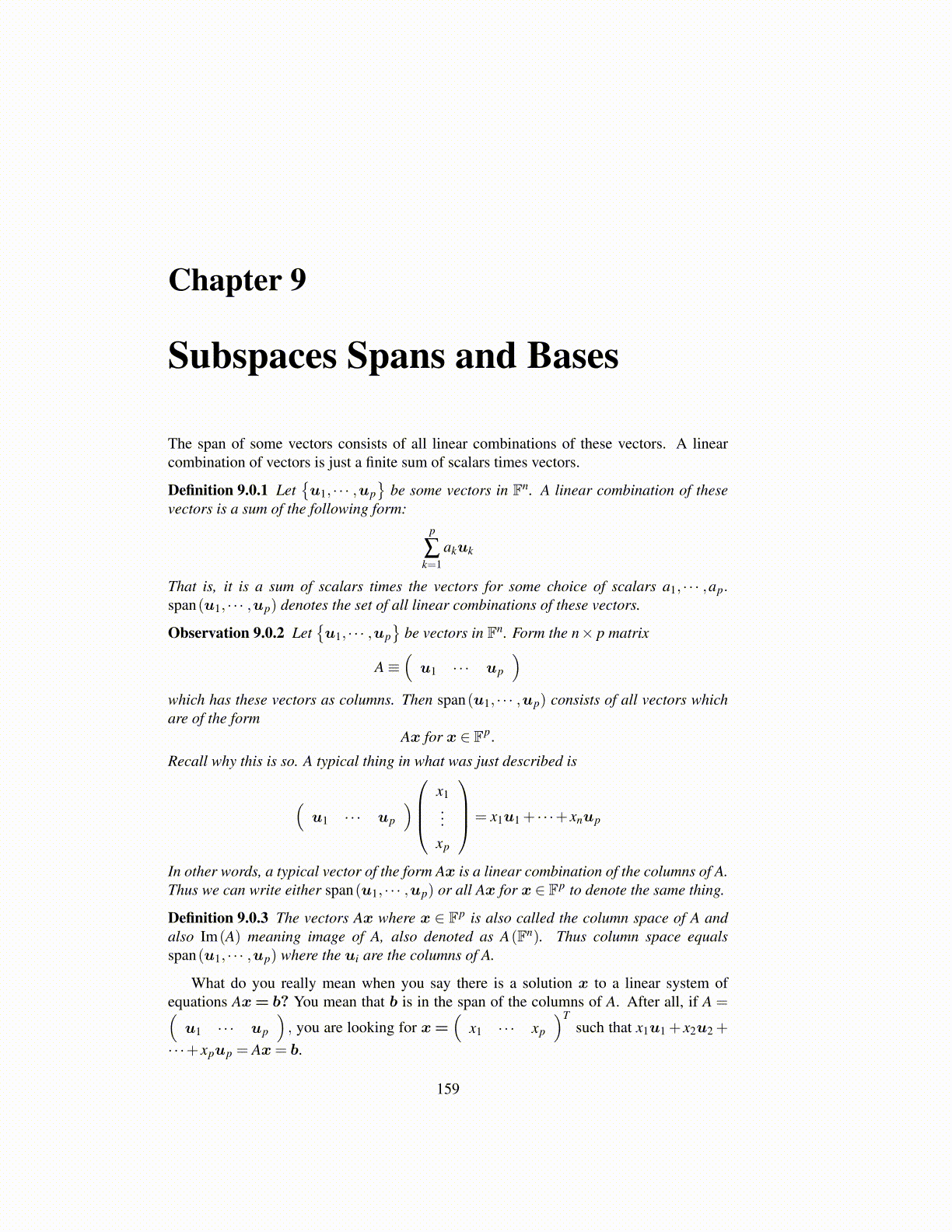
Chapter 9
Subspaces Spans and Bases
The span of some vectors consists of all linear combinations of these vectors. A linearcombination of vectors is just a finite sum of scalars times vectors.
Definition 9.0.1 Let{u1, · · · ,up
}be some vectors in Fn. A linear combination of these
vectors is a sum of the following form:p
∑k=1
akuk
That is, it is a sum of scalars times the vectors for some choice of scalars a1, · · · ,ap.span(u1, · · · ,up) denotes the set of all linear combinations of these vectors.
Observation 9.0.2 Let{u1, · · · ,up
}be vectors in Fn. Form the n× p matrix
A≡(
u1 · · · up
)which has these vectors as columns. Then span(u1, · · · ,up) consists of all vectors whichare of the form
Ax for x ∈ Fp.
Recall why this is so. A typical thing in what was just described is
(u1 · · · up
)x1...
xp
= x1u1 + · · ·+ xnup
In other words, a typical vector of the form Ax is a linear combination of the columns of A.Thus we can write either span(u1, · · · ,up) or all Ax for x ∈ Fp to denote the same thing.
Definition 9.0.3 The vectors Ax where x ∈ Fp is also called the column space of A andalso Im(A) meaning image of A, also denoted as A(Fn). Thus column space equalsspan(u1, · · · ,up) where the ui are the columns of A.
What do you really mean when you say there is a solution x to a linear system ofequations Ax= b? You mean that b is in the span of the columns of A. After all, if A =(
u1 · · · up
), you are looking for x=
(x1 · · · xp
)Tsuch that x1u1 + x2u2 +
· · ·+ xpup = Ax= b.
159